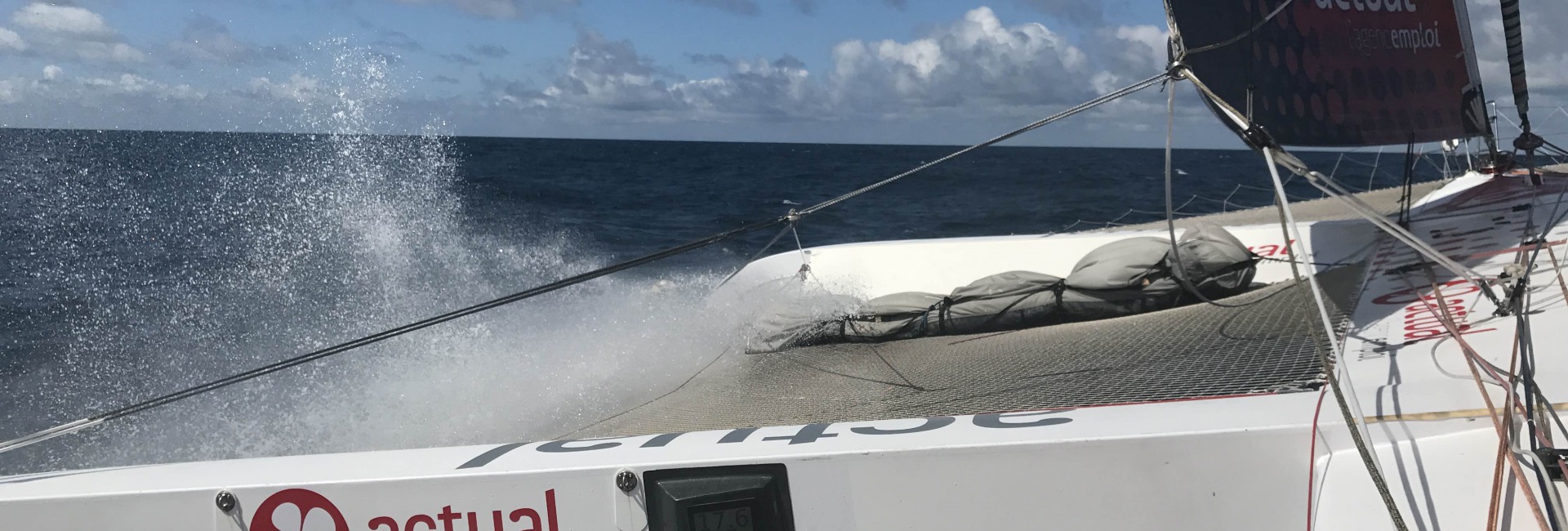
Change of plans and new set up on the North Atlantic waters. Bad weather over Queen Mary 2, whose foghorn resonates loudly every two minutes, under a persistent rain while she approaches the most the North point of her trajectory between Saint-Nazaire and New York. Less than 1000 miles away from the arrival under the Verrazzano Bridge, in the passage of legendary Grand Banks of Newfoundland, with a depression traffic and a thick cloudy front, the "lovely weather", described by Commander Christopher Wells yesterday, on a glassy sea and under a radiant sun, is only an old memory for the 2000 passengers.
For the four Ultimate trimarans, it is a whole other story for this 4th race day, while the gap widens irreparably with the imperturbable ocean liner, still making its way in express cruise mode. Also, the latter had the guts to cross to ignore the zone of ices, which was forbidden for the boats to enter to prevent taking the risk of colliding with growlers diverting icebergs located 100 miles further north.
Faux status quo…
Now 700 mile behind the steel giant, crews work in radically different conditions, and forecasts, on the route from east to west, leaves them no more chance to threaten the imperial boat of the Cunard. However, the battle is being fought out. And the status quo which seems to be taking over on the water today does not fool anyone. In spite of a compression and extension compression of the fleet, the regatta is still going full swing. « We are at the heart of what we came for », gladly confirms Francis Joyon on board IDEC sport, who progresses some thousands of miles away Macif, the current leader, while approaching the southern border of the restricted zone and imposed by the race rules of this Transatlantic race of the Centenaire. And the skipper, holder of the Trophy Jules Verne, adds: « everybody is" full on ». Yesterday evening, at the time of the last weather files’ reception, we have seen the same simultaneous changes of direction of each of the first three multihulls, proof of the reactivity of crews." »
Anything is possible towards New York
In this context, although routings are alike for 36-48 hours and no differences in the route choices of the four protagonists is expected, the horizon clears for the last section of the race between New Earth and New York. «This zone is a real nursery for a multitude of phenomenon developing there», explains Dominic Vittet, the race’s meteorologist. « Among them, some die there, others generate depressions, which then cross the Atlantic Ocean up to our European coast. This zone and its phenomenon remain very difficult to predict and leave the field open for many uncertainties for the end of race, by offering so many moves possible … » And it is not the 22 sailors racing will say the opposite, when three sea days remain. For them too, New York still is the city where anything is possible…